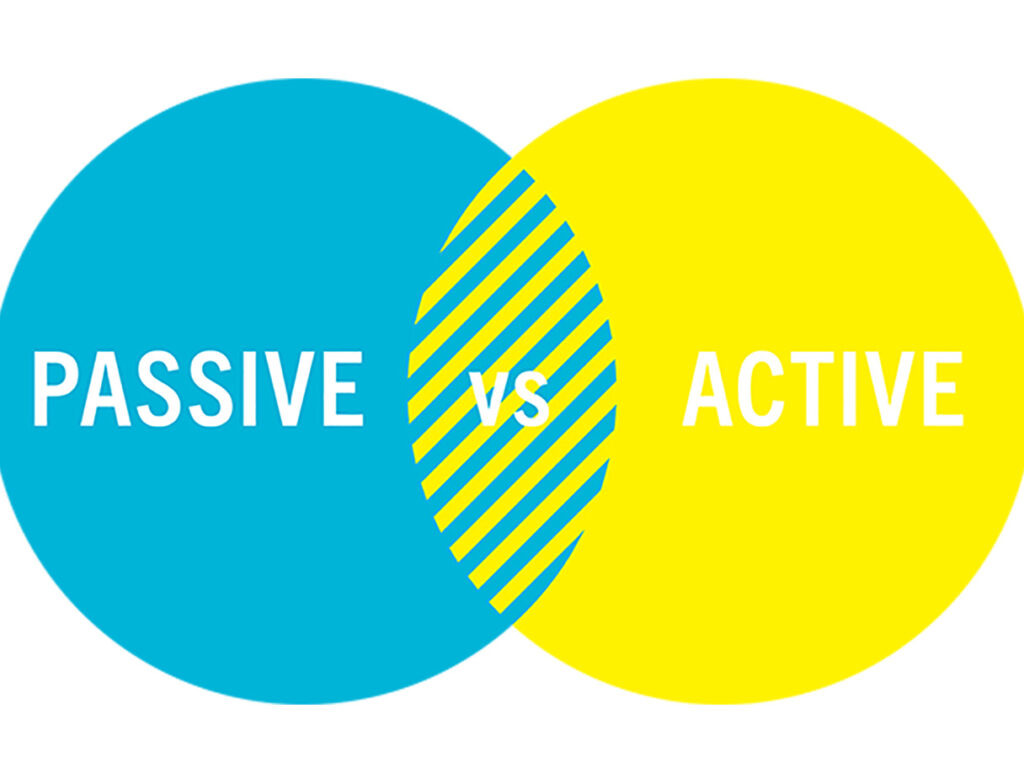Passive vs Active

In their current form, ETFs and passive vehicles are not the right tool to place money into the market if you’re seeking to achieve both financial and positive impact return.
The growth of these low-cost vehicles is understandable in the context of poor performance from some active managers this year, so it can be understandably difficult for retail investors to select good active fund managers, and justify the higher fees they charge.
A recent Spiva report stated 45 percent of actively managed UK
Equity
Investors seeking effective ESG and impact portfolios need to consider the significant limitations of relying on passive options for a number of reasons:
Blind index tracking
As it currently stands, passive strategies typically replicate an index without explicit engagement or stewardship on the companies within the index. This can leave passive strategies exposed to holdings at risk of poor ESG outcomes with limited opportunities to engage directly with all companies in the portfolio.
Relying on third party data
Many ETFs currently being marketed as impact or responsible or sustainable are relying solely on third party ESG data with little guided or expert interpretation. This results in these passive funds holding businesses whose practices and products are not sustainable and positively impactful.
Lack of shareholder engagement
Couple this with limited shareholder engagement and passive funds become as much a part of the problem as their holdings are. Investing for impact can’t be silent on what a company does. [We wrote about this recently] In an actively managed approach, engagement and stewardship is more easily achieved on more concentrated portfolios; baked into bottom-up stock selection, and in the case of impact active managers, the inclusion of explicit ESG and impact targets and outcomes.
Ignoring company disclosures
There’s enough disclosure out there for more passives to be doing a better job on
Sustainability
Outperformance of active impact management
Furthermore, impact active asset managers have distinguished themselves this year in a market where non-sustainable active investors have had difficulty justifying their, typically, higher management fees compared to their passive alternatives. Our medium risk portfolio is up almost 10% this year, to end of Q3, an 11.7% outperformance relative to ARC. 2
There are, however, some early signs of a response in the marketplace with some ETF providers beginning to acknowledge these limitations. Some passive specialists are building proprietary indices, populated with companies that have been subject to rigourous analysis and engagement, which in turn are being wrapped into an ETF, therefore offering investors a more cost-effective product.
But there are still certain compromises for these lower fees; most underlying indices are still only updated half yearly, and the degree of shareholder engagement through voting records, as an example, still needs significant development.
So, in a complex world, where the reality of business is non-linear, can passives truly reflect this data in a rules-based environment? Inputs into decision making today need to be multi-dimensional and based on finance, social, environmental, geopolitical, and economic factors.
Nuances in the data need to be appreciated as much as the data itself needs to be interrogated. Most fund managers aren’t equipped for this type of complexity, regardless of whether they’re passive or active managers.
That’s why we believe in our double CIO model (a chief investment officer and chief impact officer); investment and impact working closely together to identify and invest in tomorrow’s businesses, today.
We believe active management is still the best approach to risk adjusted good investing in the sustainable and impact investing space. Investors should not only get a higher level of risk management and investment opportunity identification, they also know that the companies they are exposed to are future fit.
Footnotes
- Scroll to footnote
-
Sources: Bloomberg and ARC data 1st January to 30th SeptemberScroll to footnote





